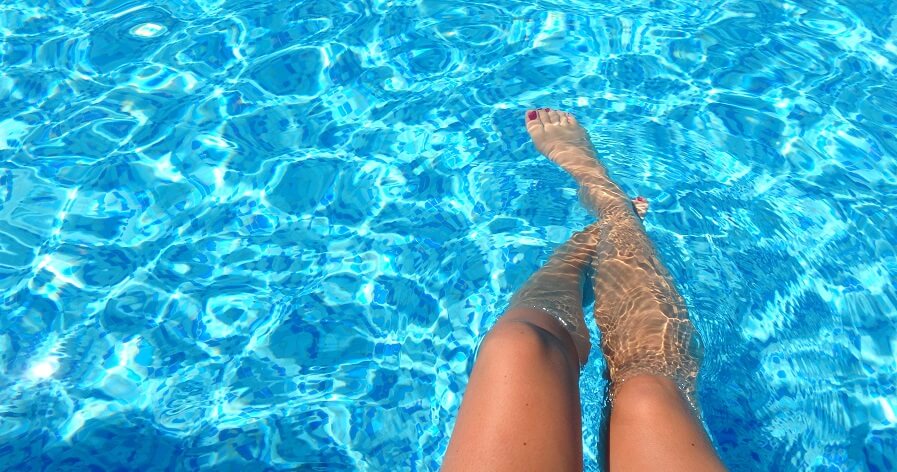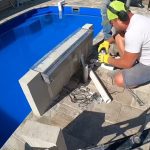When you refill your pool with fresh water, it is essential to ensure that the water is properly balanced to maintain a safe and enjoyable swimming environment. Balancing your pool water involves adjusting the levels of various chemicals to prevent issues such as algae growth, cloudy water, and skin irritation. In this article, we will discuss the steps you need to take to balance your pool water after refilling.

Credit: www.edgewaterpools.ca
1. Test Your Water
The first step in balancing your pool water is to test it using a pool water testing kit. This kit will help you determine the current levels of chlorine, pH, alkalinity, and other essential parameters in your pool water. Make sure to follow the instructions provided with the testing kit for accurate results.

Credit: www.instagram.com
2. Adjust pH Levels
Once you have tested your pool water, the next step is to adjust the pH levels. The ideal pH range for pool water is between 7.2 and 7.6. If the pH levels are too high, you can use a pH decreaser to bring them down. If the pH levels are too low, you can use a pH increaser to raise them to the optimal range.
3. Balance Alkalinity
After adjusting the pH levels, you should check the alkalinity of your pool water. The recommended alkalinity level for pool water is between 80 and 120 parts per million (ppm). If the alkalinity levels are outside of this range, you can use an alkalinity increaser or decreaser to bring them into the appropriate range.
4. Chlorine Levels
Chlorine is essential for disinfecting pool water and keeping it free from harmful bacteria and algae. Test the chlorine levels in your pool water and ensure that they fall within the recommended range of 1.0 to 3.0 ppm. You can use chlorine tablets or liquid chlorine to adjust the chlorine levels as needed.
5. Calcium Hardness
Calcium hardness refers to the amount of dissolved calcium in your pool water. The ideal range for calcium hardness is between 200 and 400 ppm. If the calcium hardness levels are too low, you can use a calcium hardness increaser to raise them. If the levels are too high, you may need to partially drain and refill your pool with fresh water.
6. Stabilize the Water
Stabilizer, also known as cyanuric acid, helps protect chlorine from being broken down by sunlight. The recommended stabilizer level for pool water is between 30 and 50 ppm. You can add stabilizer to your pool water to maintain the appropriate levels and ensure that your chlorine remains effective.
7. Monitor and Maintain
Once you have balanced your pool water, it is important to regularly monitor the chemical levels to ensure that they remain within the recommended ranges. You should test your pool water at least once a week and make adjustments as needed to keep your pool water safe and clear.
Conclusion
Balancing your pool water after refilling is crucial for maintaining a clean and safe swimming environment. By following the steps outlined in this article and regularly monitoring your pool water, you can enjoy crystal-clear water and a healthy swimming experience. Remember to always follow the manufacturer’s instructions when adding chemicals to your pool water and seek professional help if you are unsure about how to balance your pool water properly.




